Media | Articles
Final Parking Space: 1986 Saab 900 S Sedan
Welcome back to Final Parking Space, where discarded vehicles tell us their stories of automotive history. A couple of months back, we took a look at a well-traveled Göteborg machine in a California boneyard, and today we’ll be admiring another 1980s Swede. This car was born in Trollhättan, just north of Volvo HQ: a 1986 Saab 900 S four-door, found in a Denver-self-service yard.
The wild Saab 900 Turbo gets most of the attention nowadays, and I’ve found plenty of those during my junkyard travels, but the 16-valve naturally-aspirated versions were respectably quick and much more affordable. In 1986, the 900 S got this 2.0-liter DOHC engine, rated at 125 horsepower and 123 pound-feet. That’s quite a bit less than the 160 horsepower and 188 pound-feet from the turbocharged version that year, but beats the 110 horses and 119 pound-feet from the base SOHC-equipped 900 for ’86.
This engine family was born back in the middle 1960s, when Saab hired Triumph to develop the engine to be used in the Saab 99. The Triumph Slant-Four went on to power Triumph models beginning with the 1972 Dolomite and continued under Triumph bonnets through the final TR7s in 1981. The Saab and Triumph versions diverged significantly over the years, but the soundness of the original design shows in the fact that Saabs were powered by descendants of the original Slant-Four all the way through 2010.
All 1986 Saabs sold in the United States had a five-speed manual transmission as base equipment, and that’s what this car has. An automatic transmission was a $400 option ($1126 in 2024 dollars), but I have yet to find a retired 900 with two pedals. (Amazingly, I have documented slushbox-equipped examples of the Porsche 944 and Fiat 124 Sport Spider.)
Marketplace
Buy and sell classics with confidence
The front-wheel-drive 900 performed very well on snow and ice and thus proved quite popular in the Mountain West. This car appears to have begun its career in Wyoming, where even frost-hardened Swedes might find the winter driving a challenge.
A previous owner of this car seems to have attended the University of Wyoming College of Law. A fuel-efficient, snow-capable Saab 900 would have been a sensible vehicle for a lawyer visiting clients scattered around the vast distances and harsh climate of the Equality State.
The MSRP for the 1986 Saab 900 S four-door sedan was $16,495, or about $46,417 after inflation. That compared favorably with the $20,055 BMW 325 four-door (which had four fewer horsepower and 47 more pound-feet than the Saab).
This car had just over 100,000 miles on the odometer at the end. That VDO clock/tachometer assembly was shared with some Mercedes-Benz models of the same era, though with different colors.
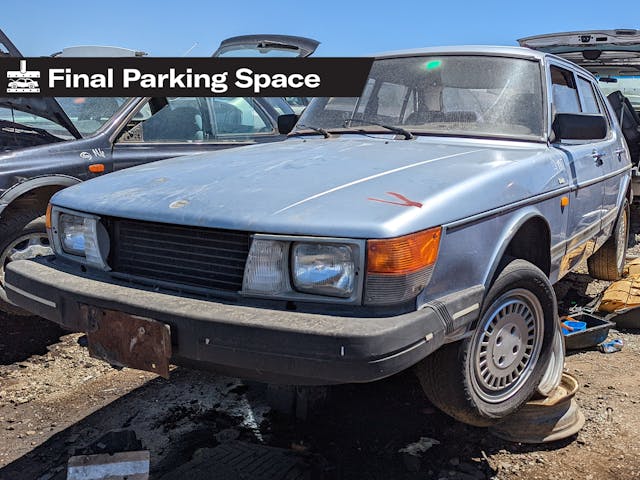
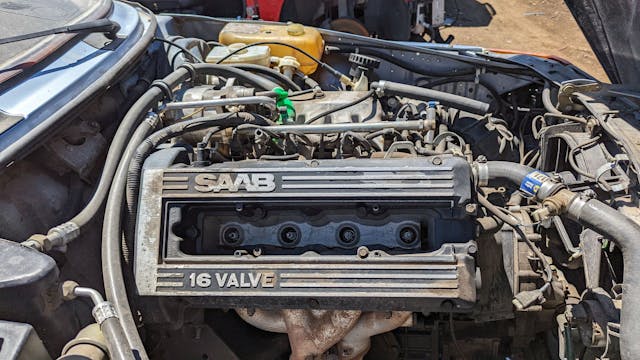
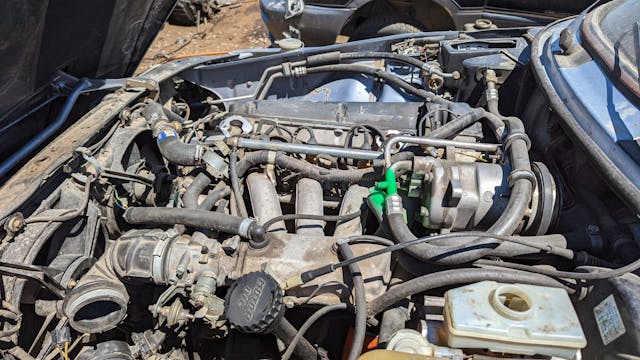
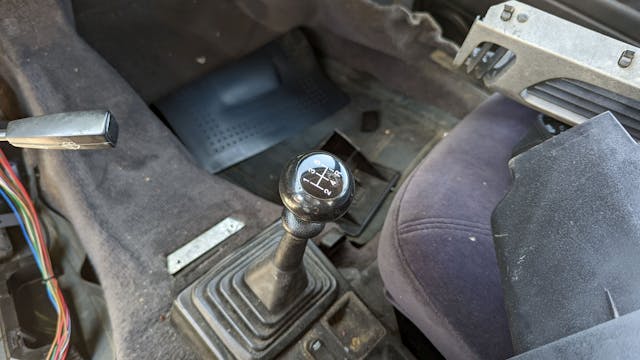








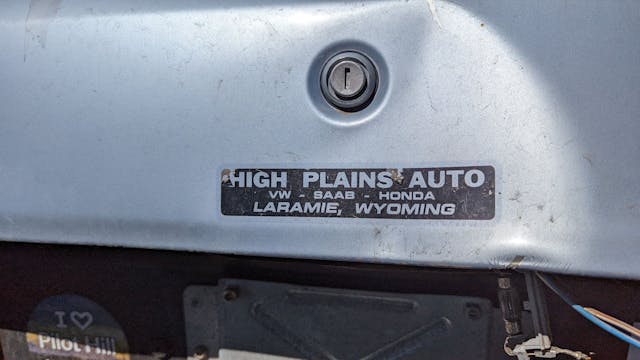
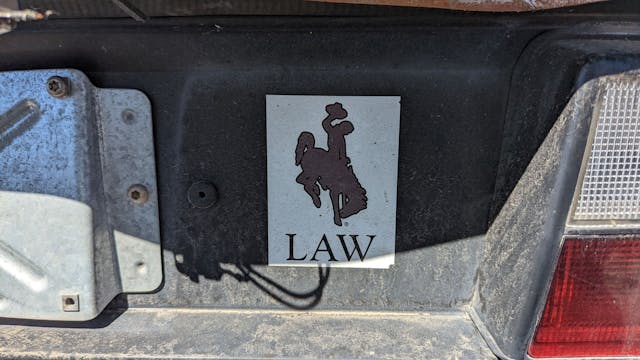

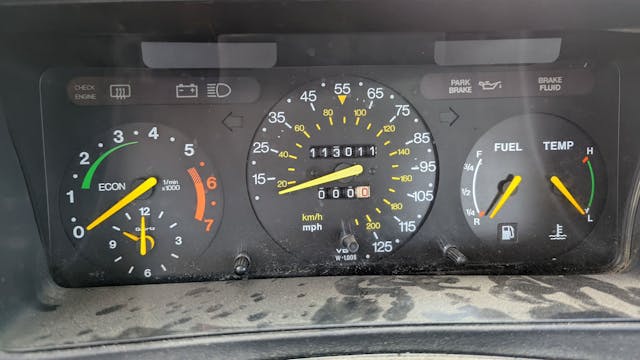
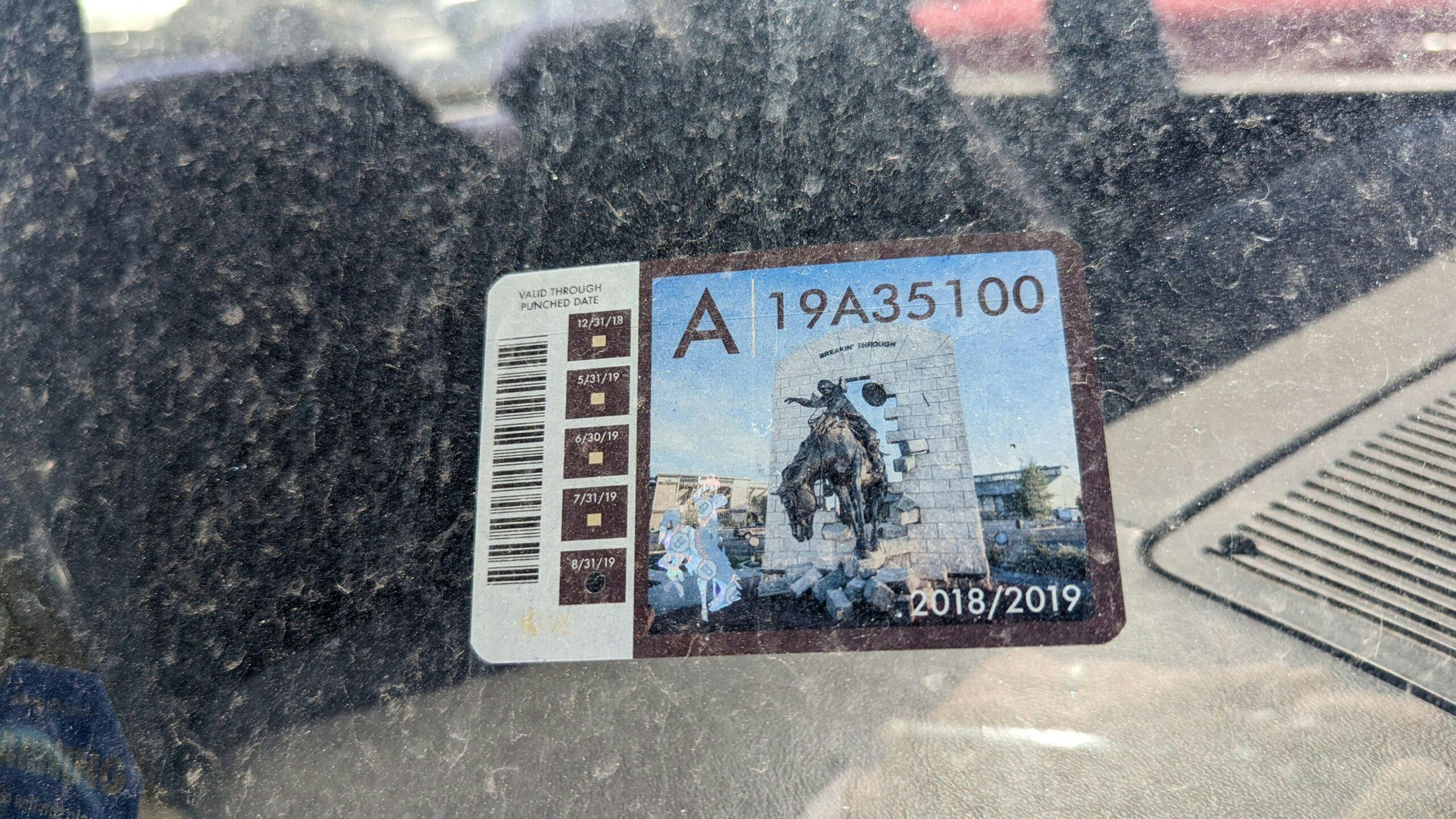
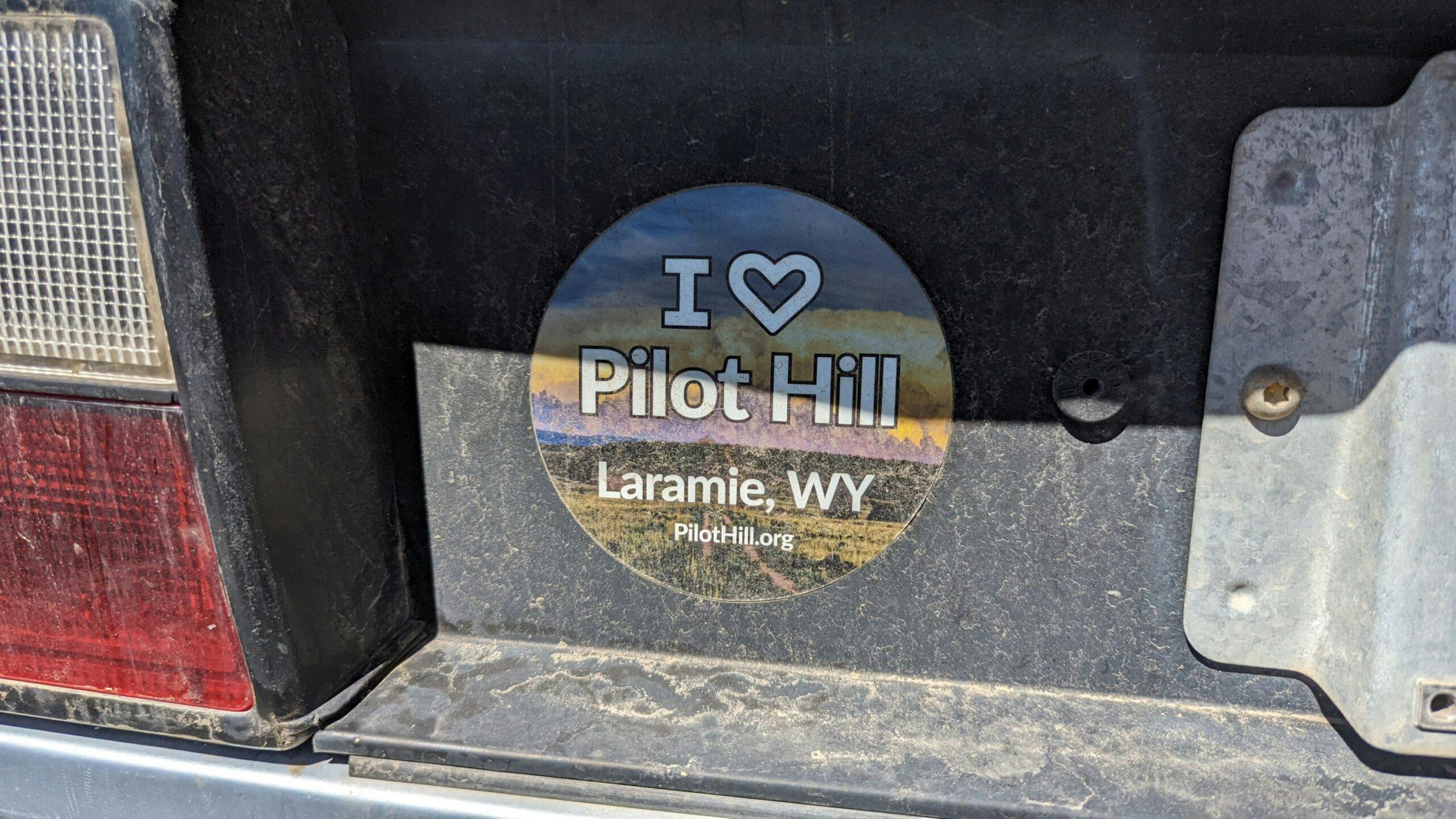
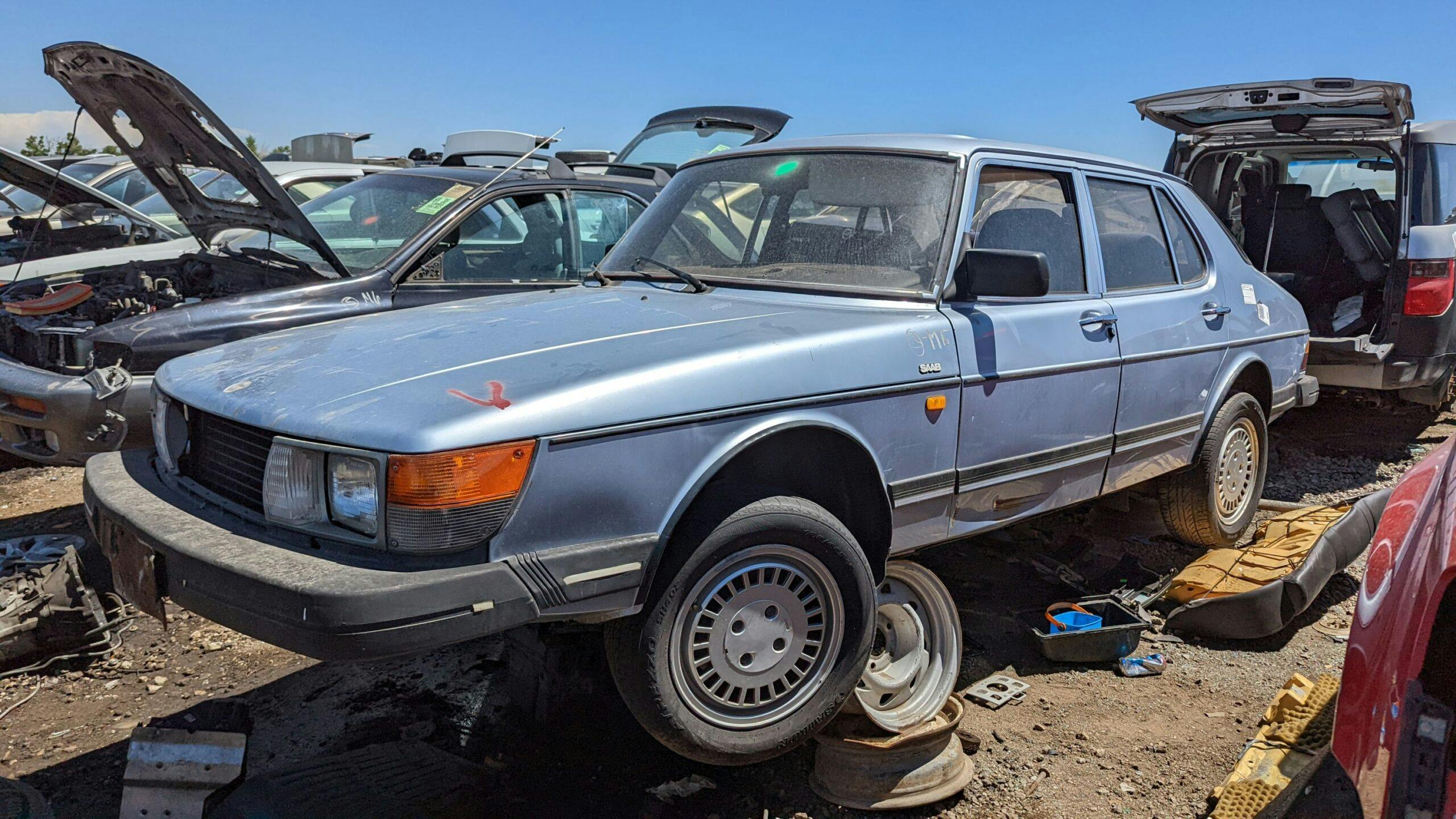
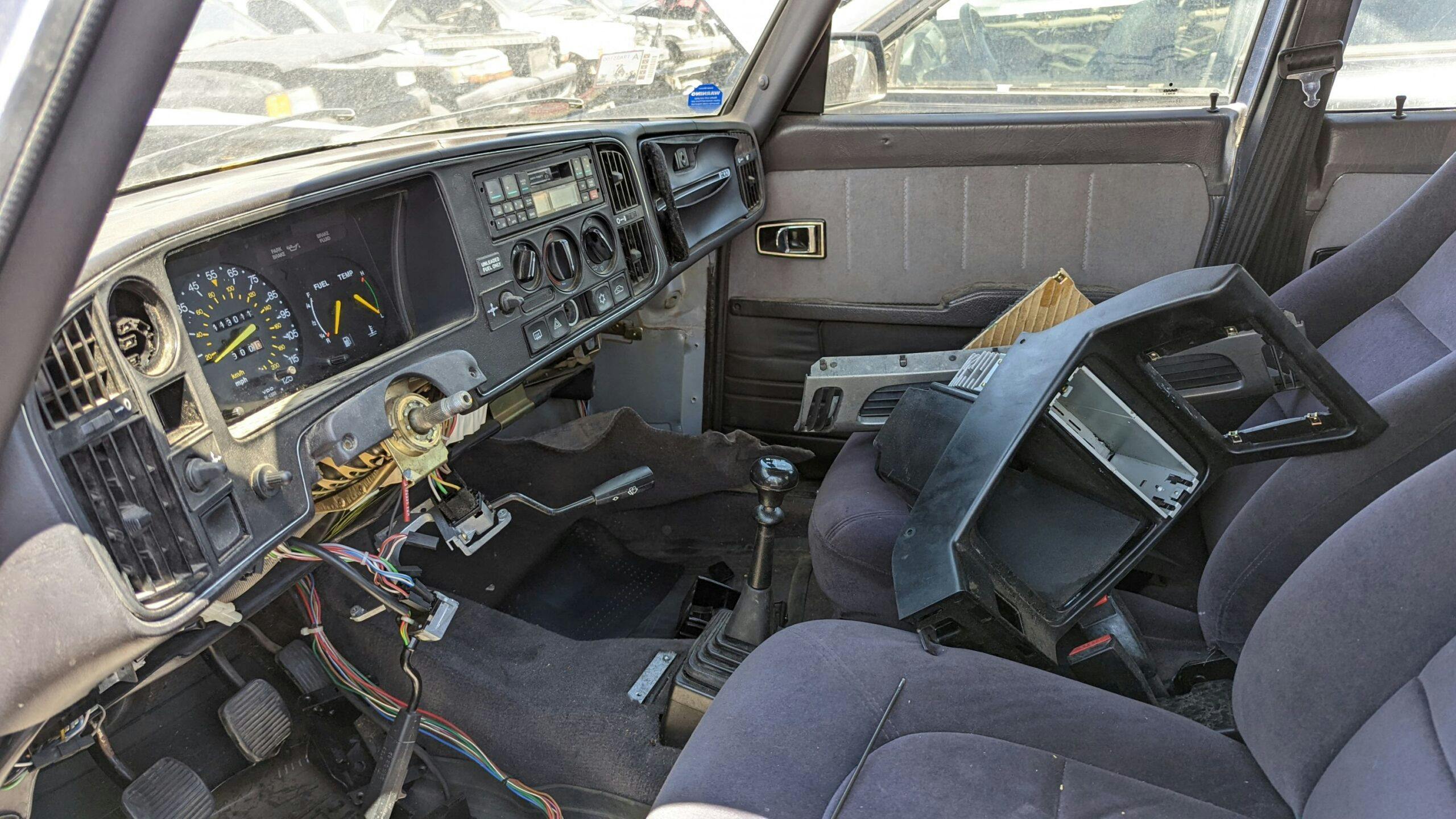
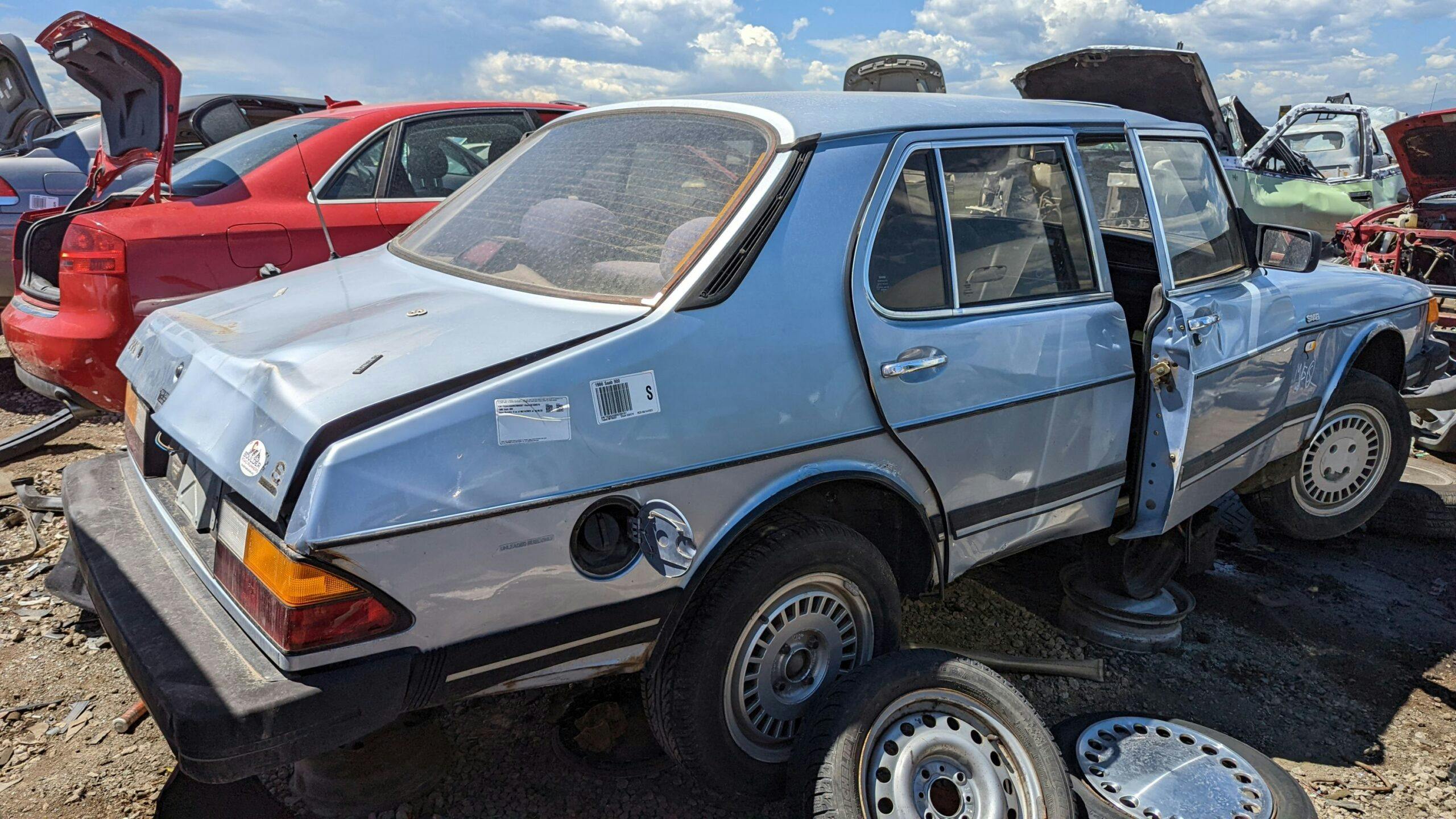

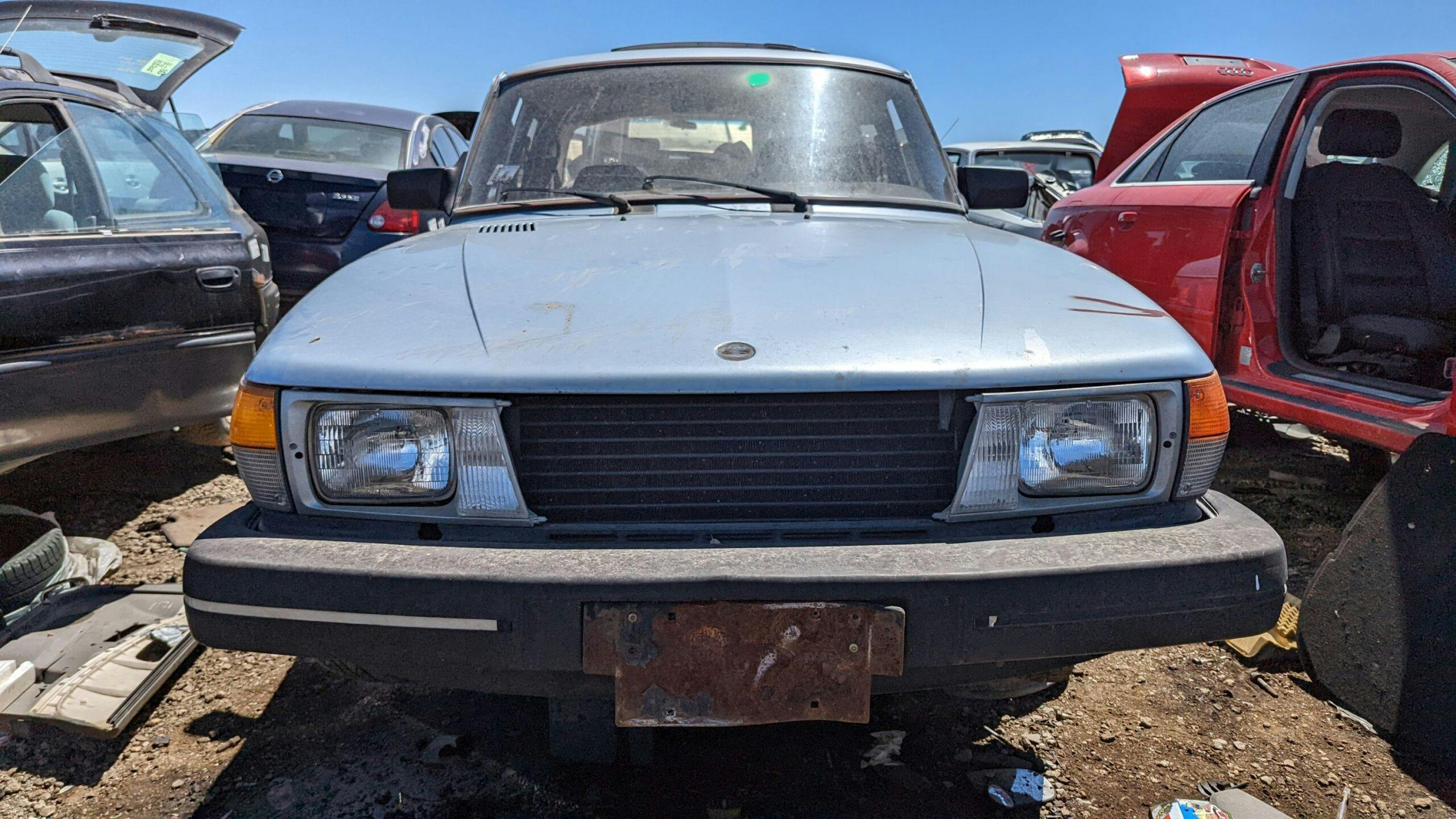
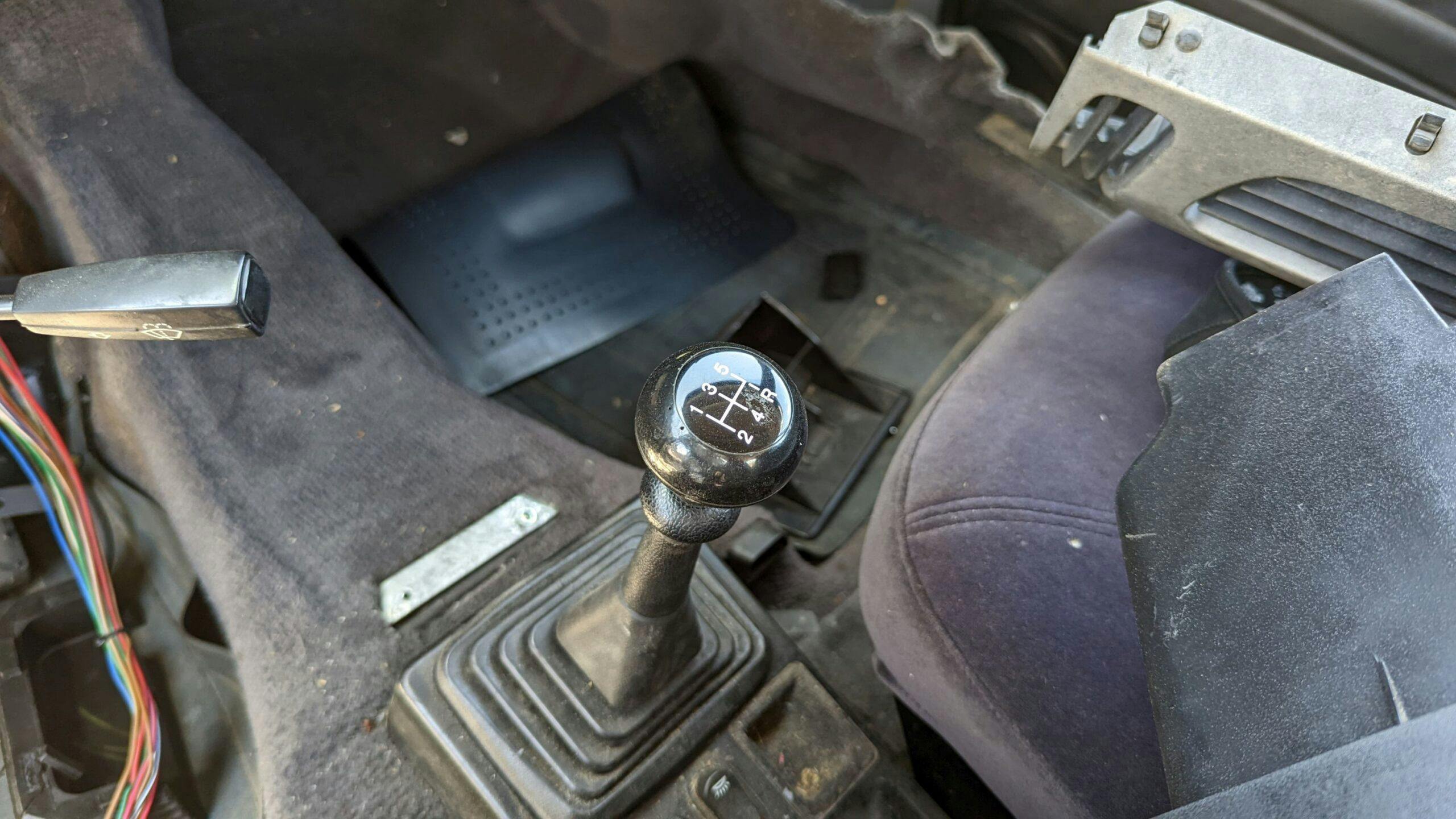
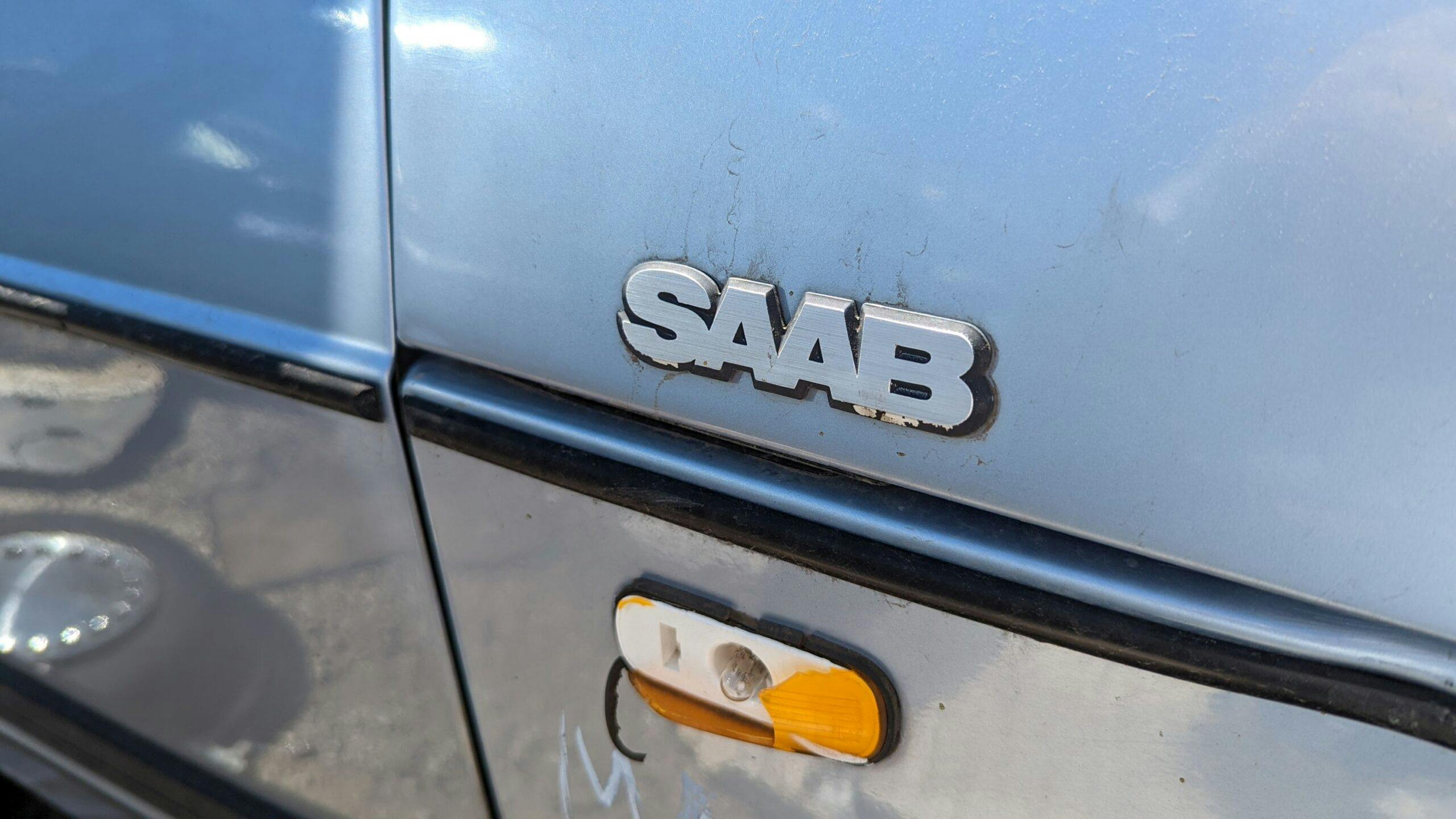

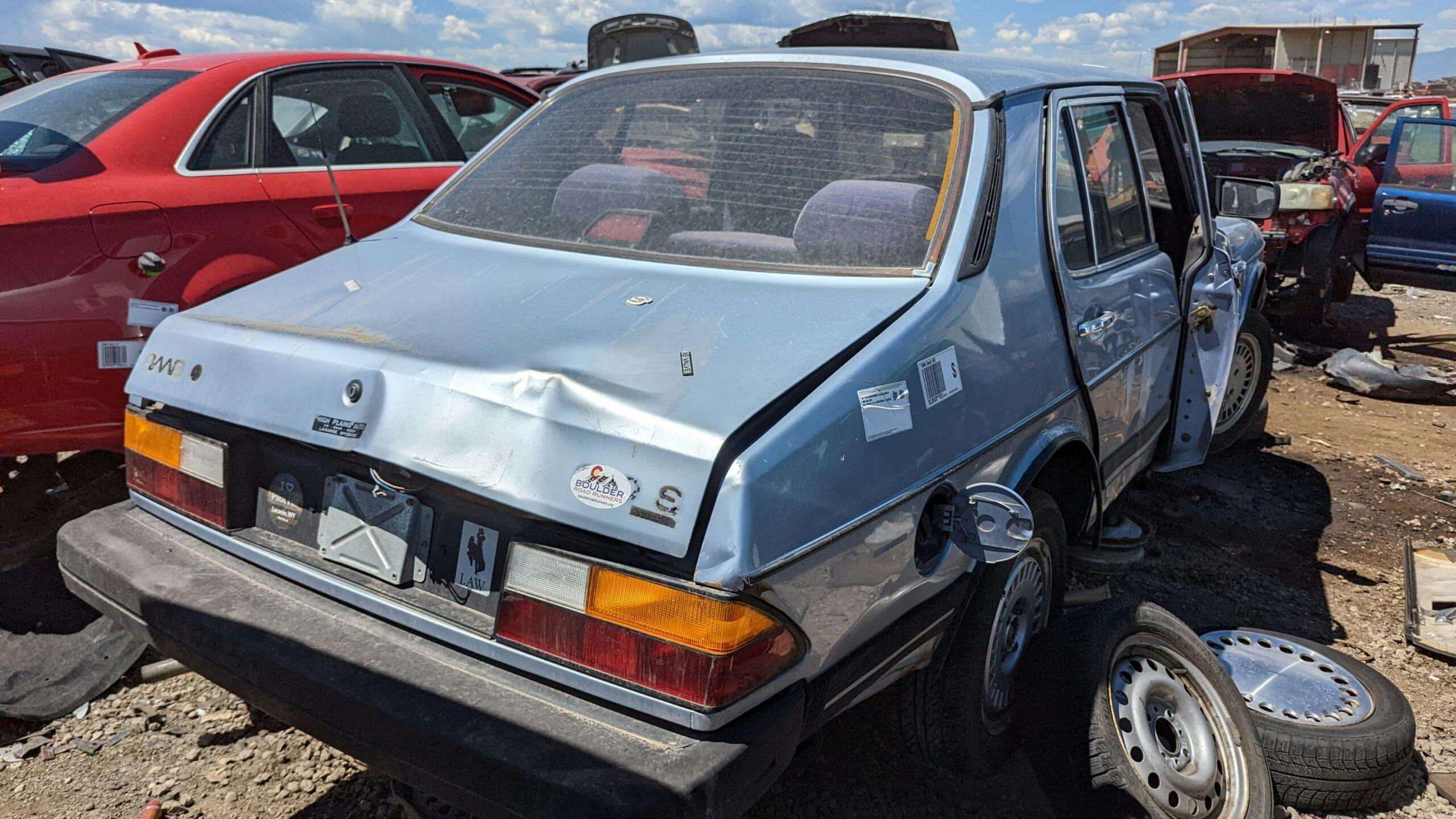

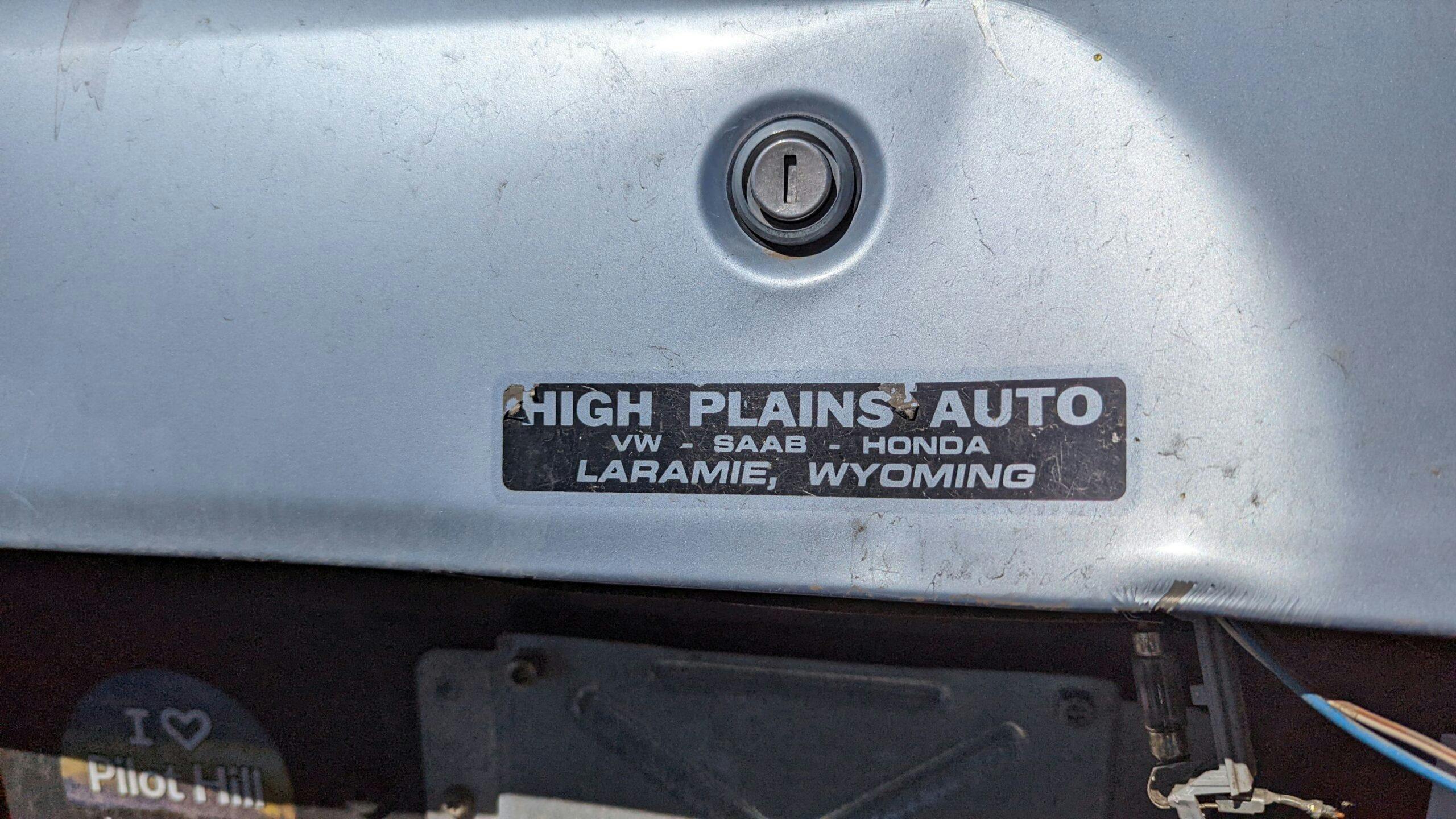
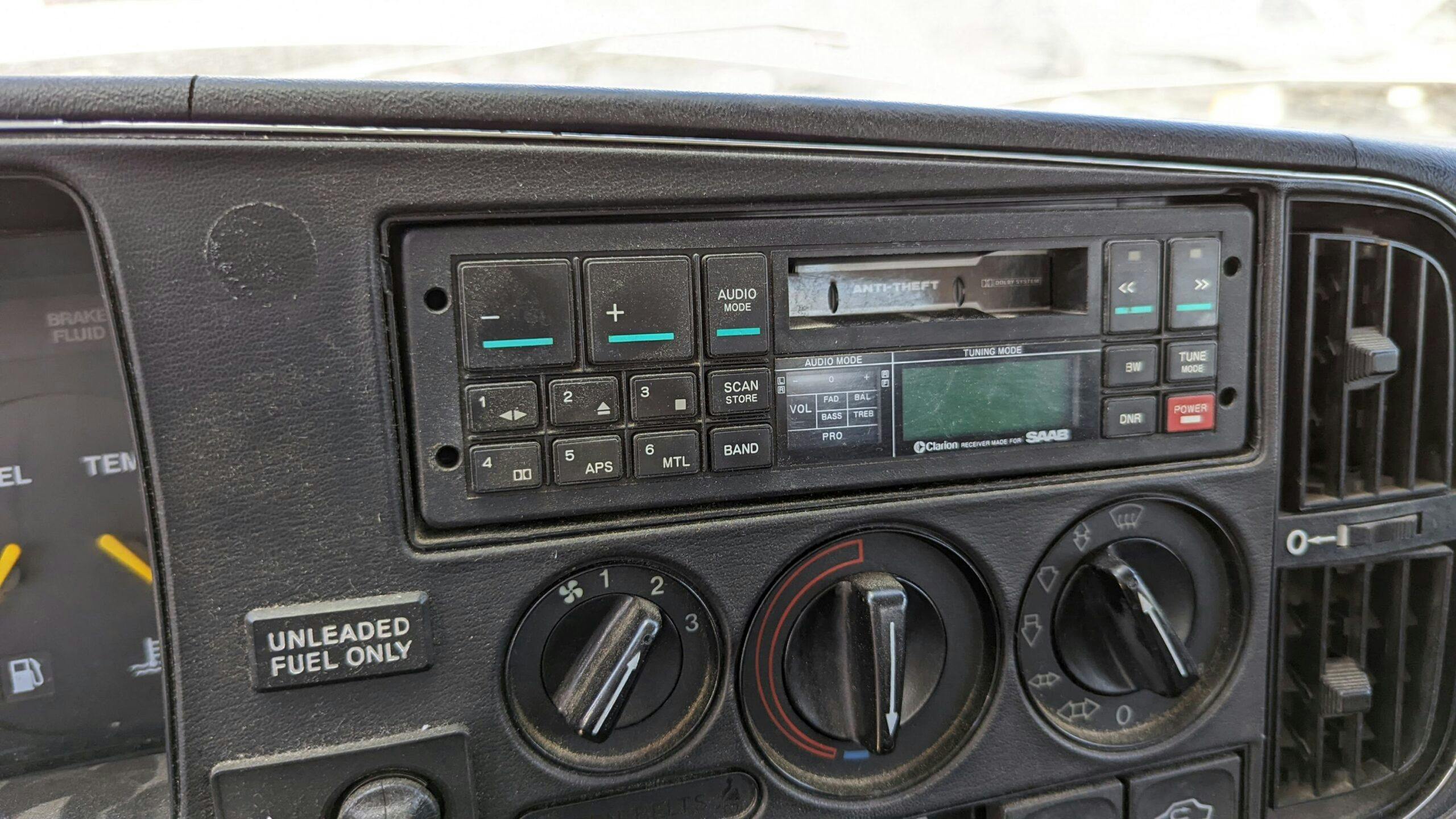


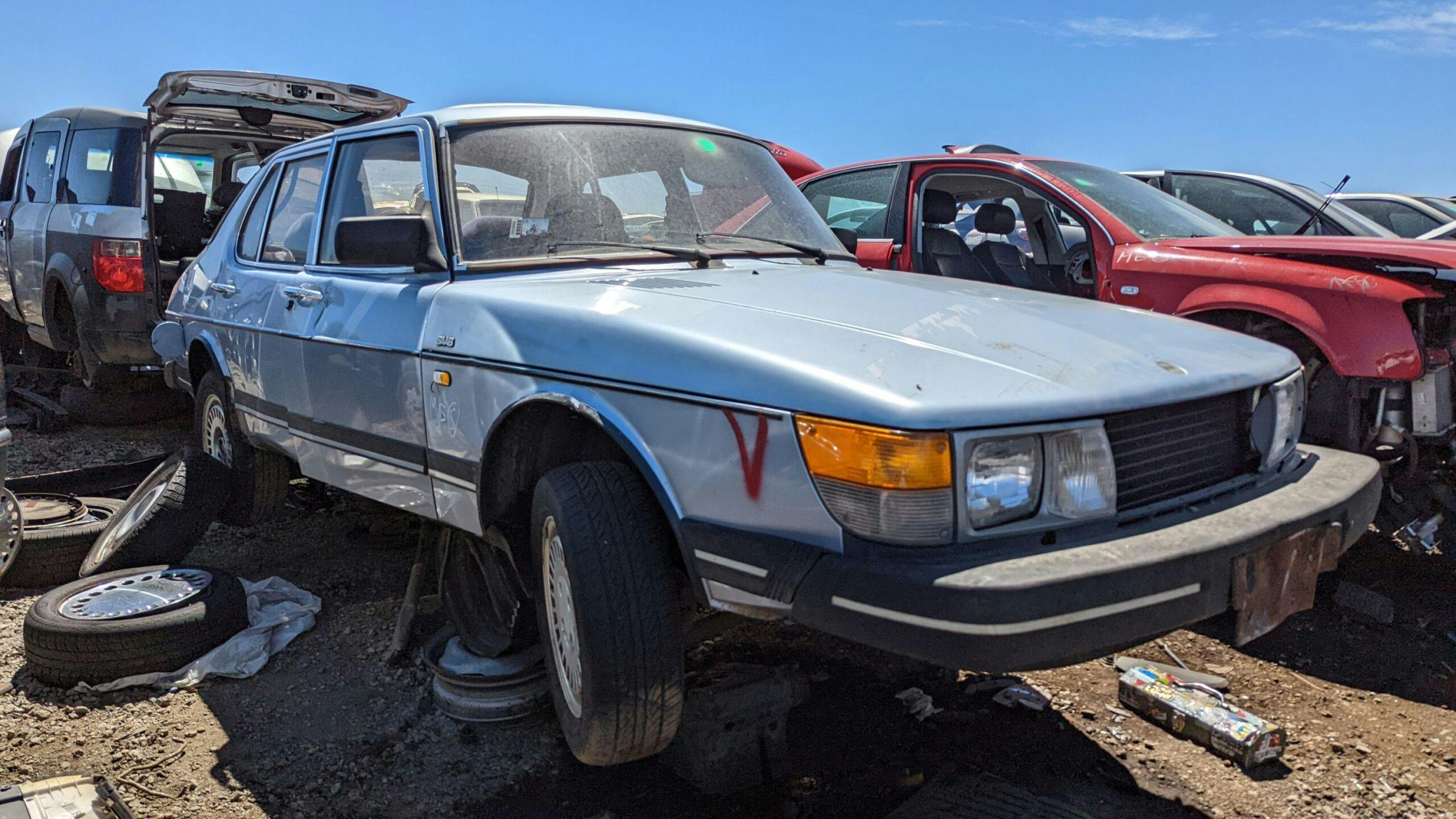
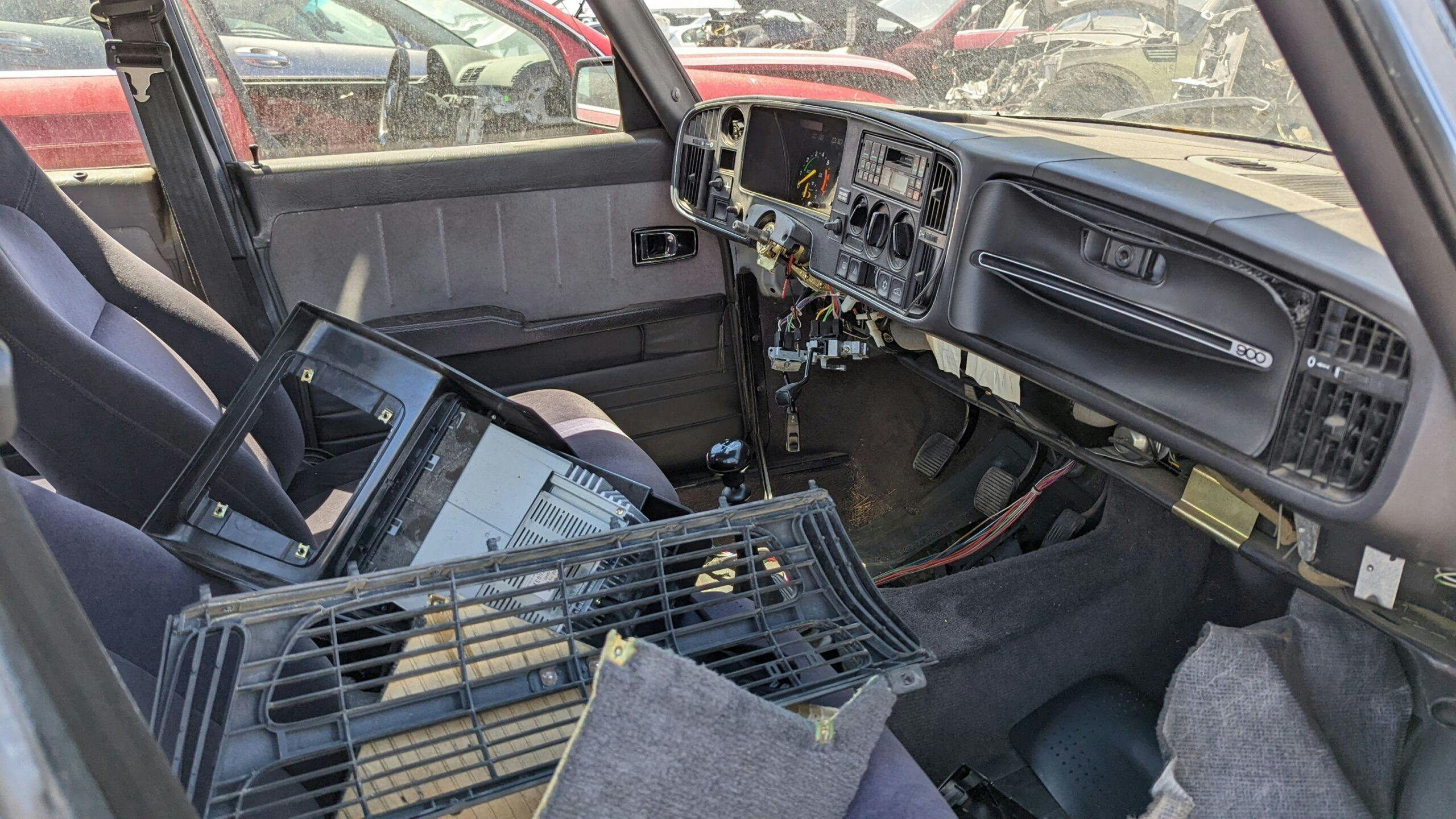
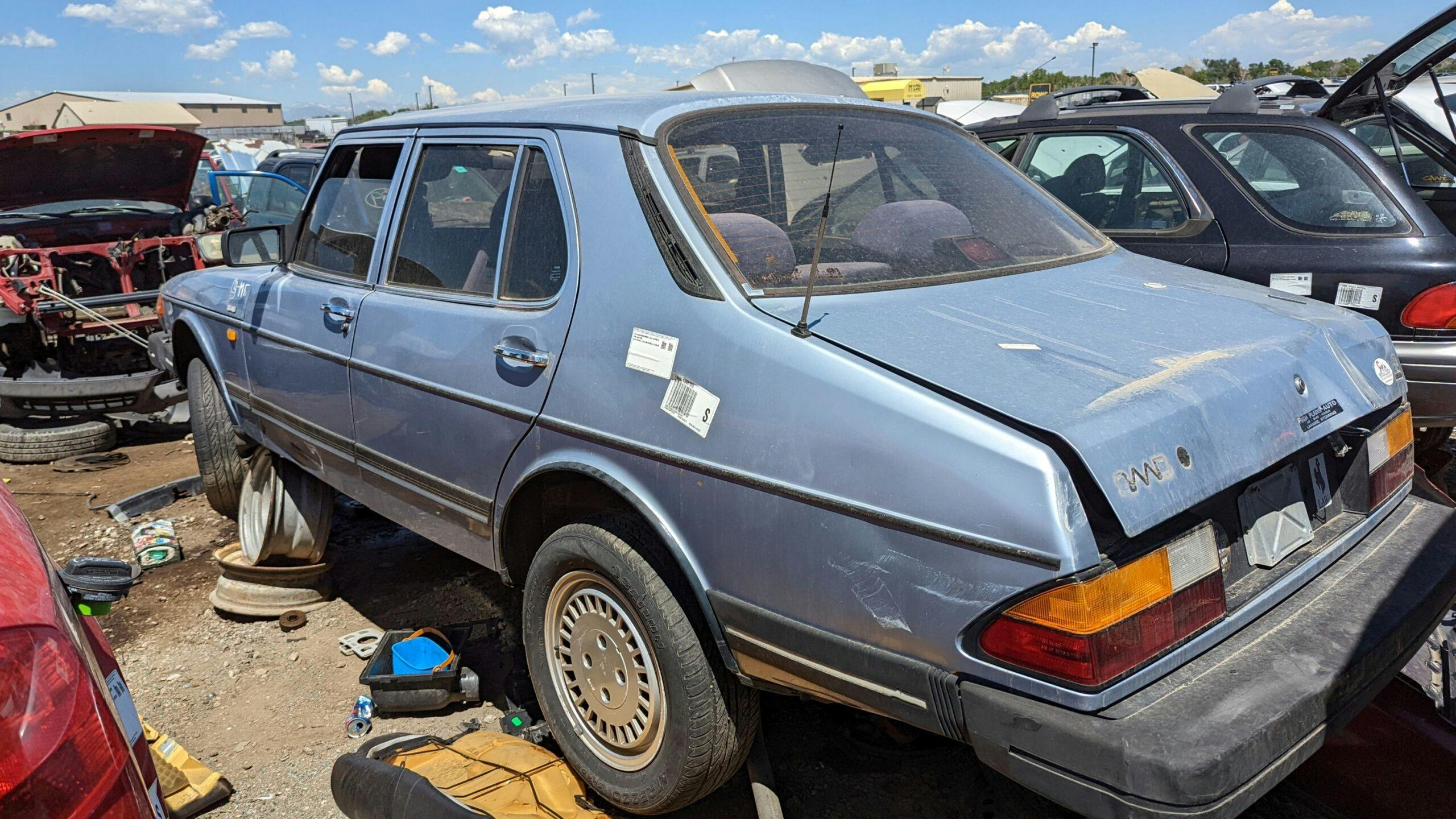
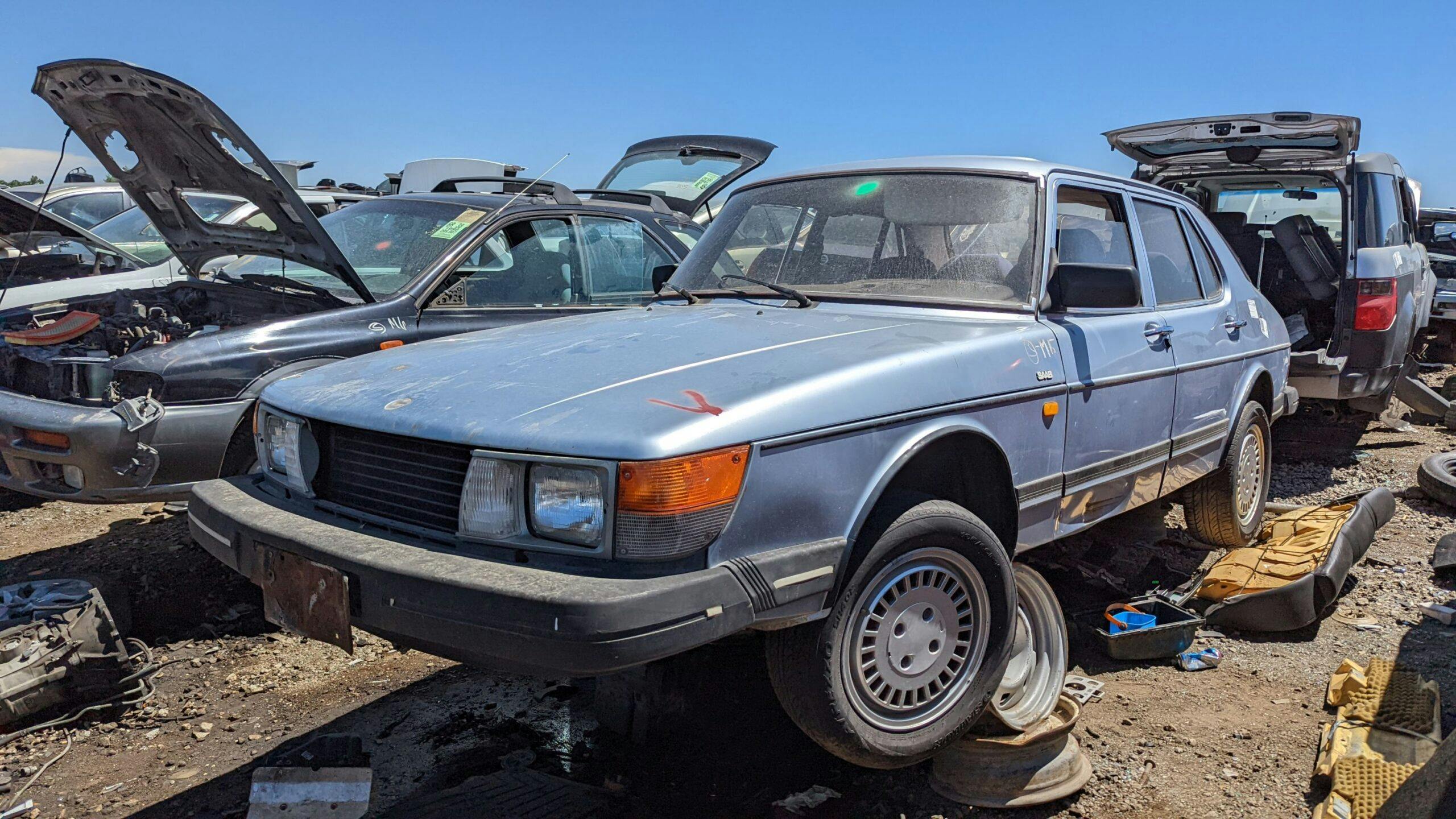
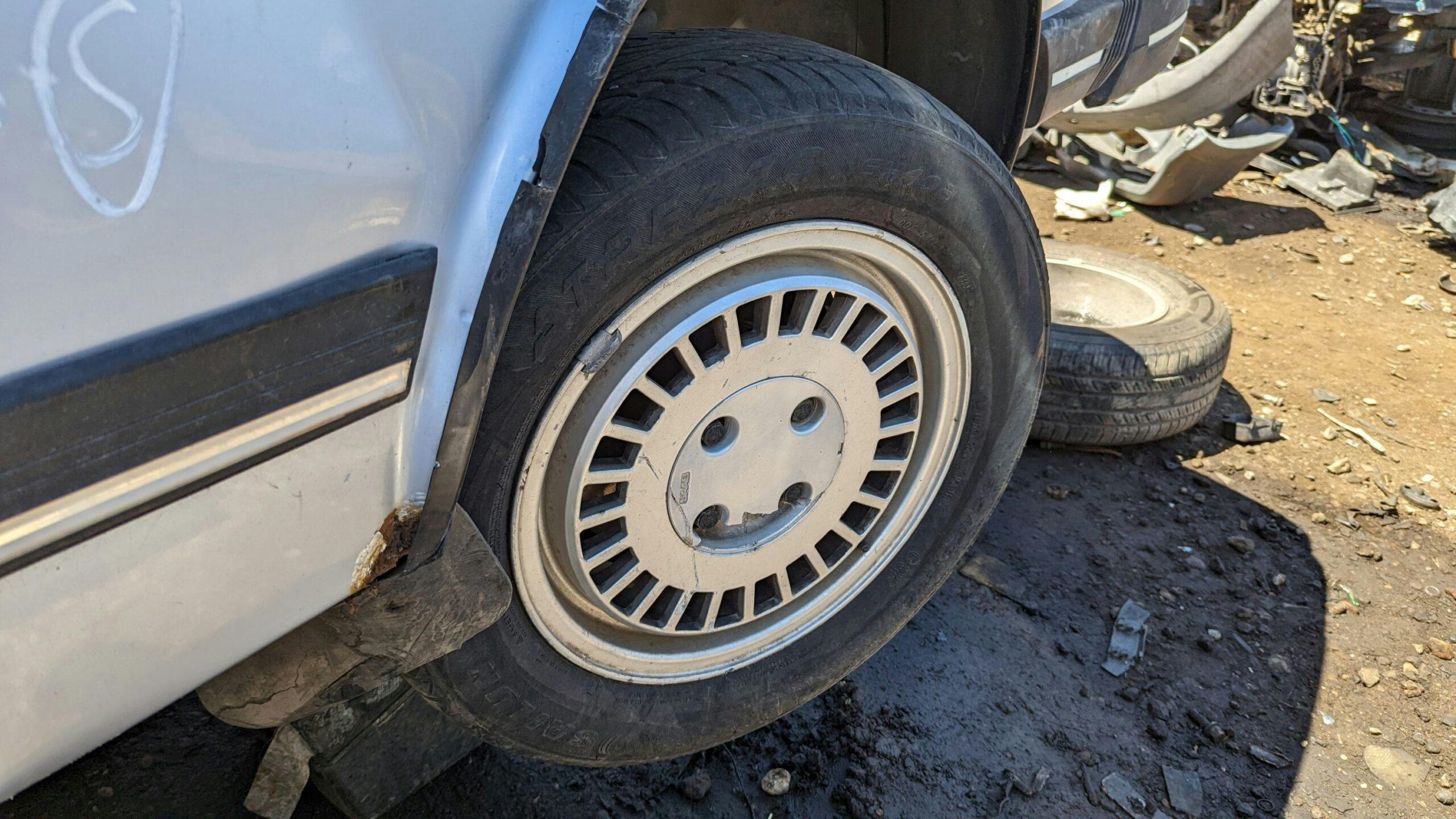
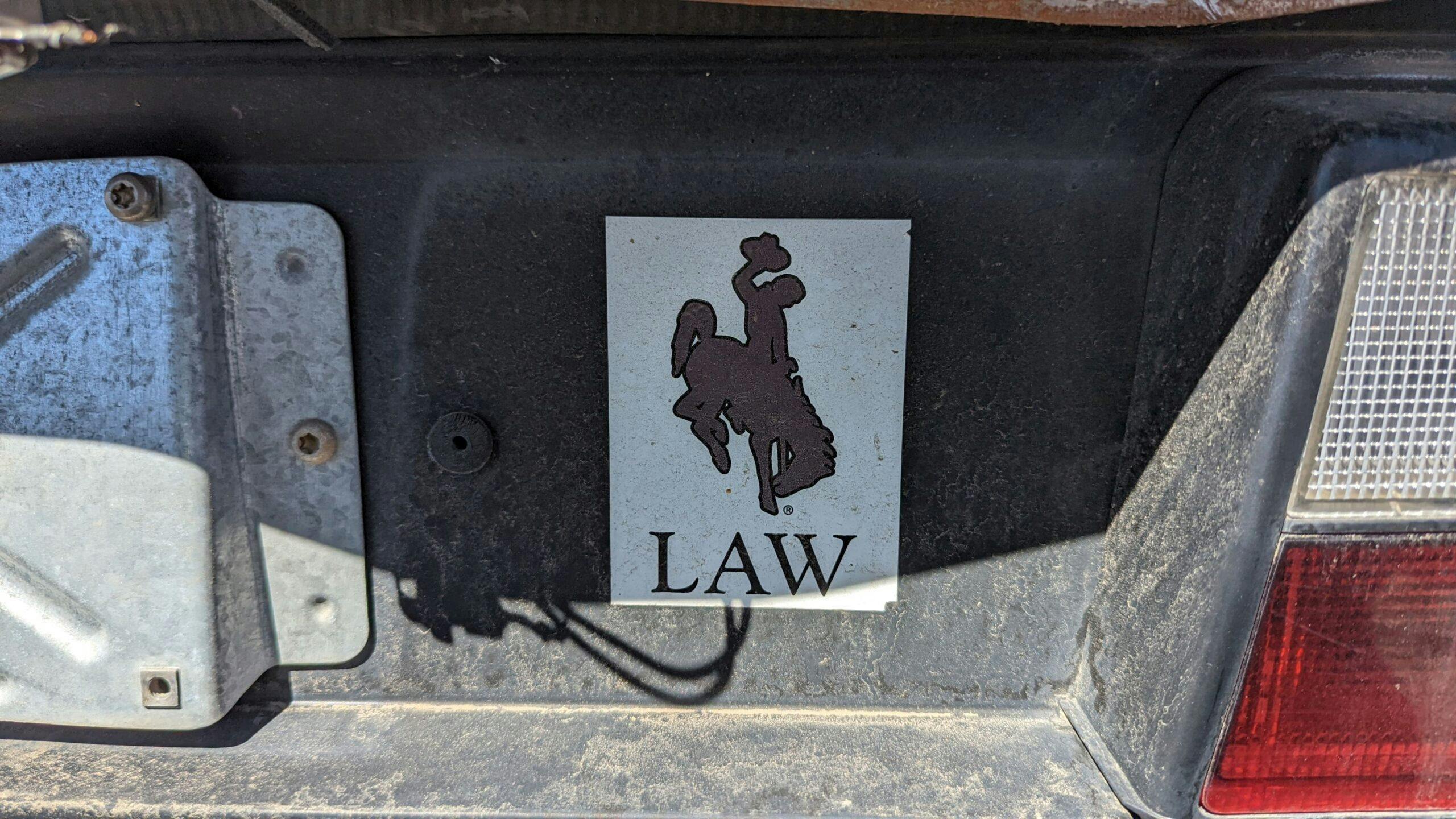
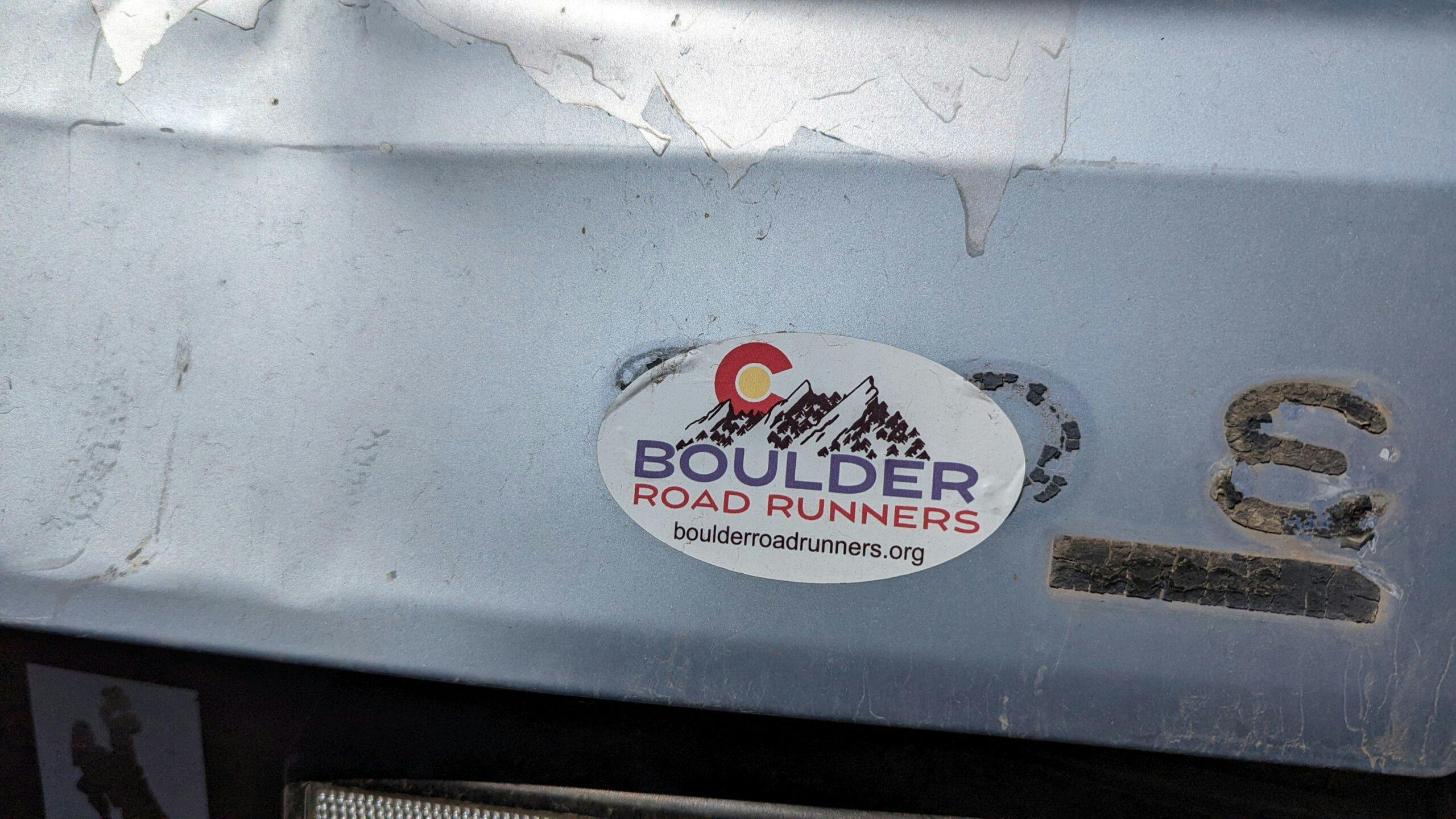
































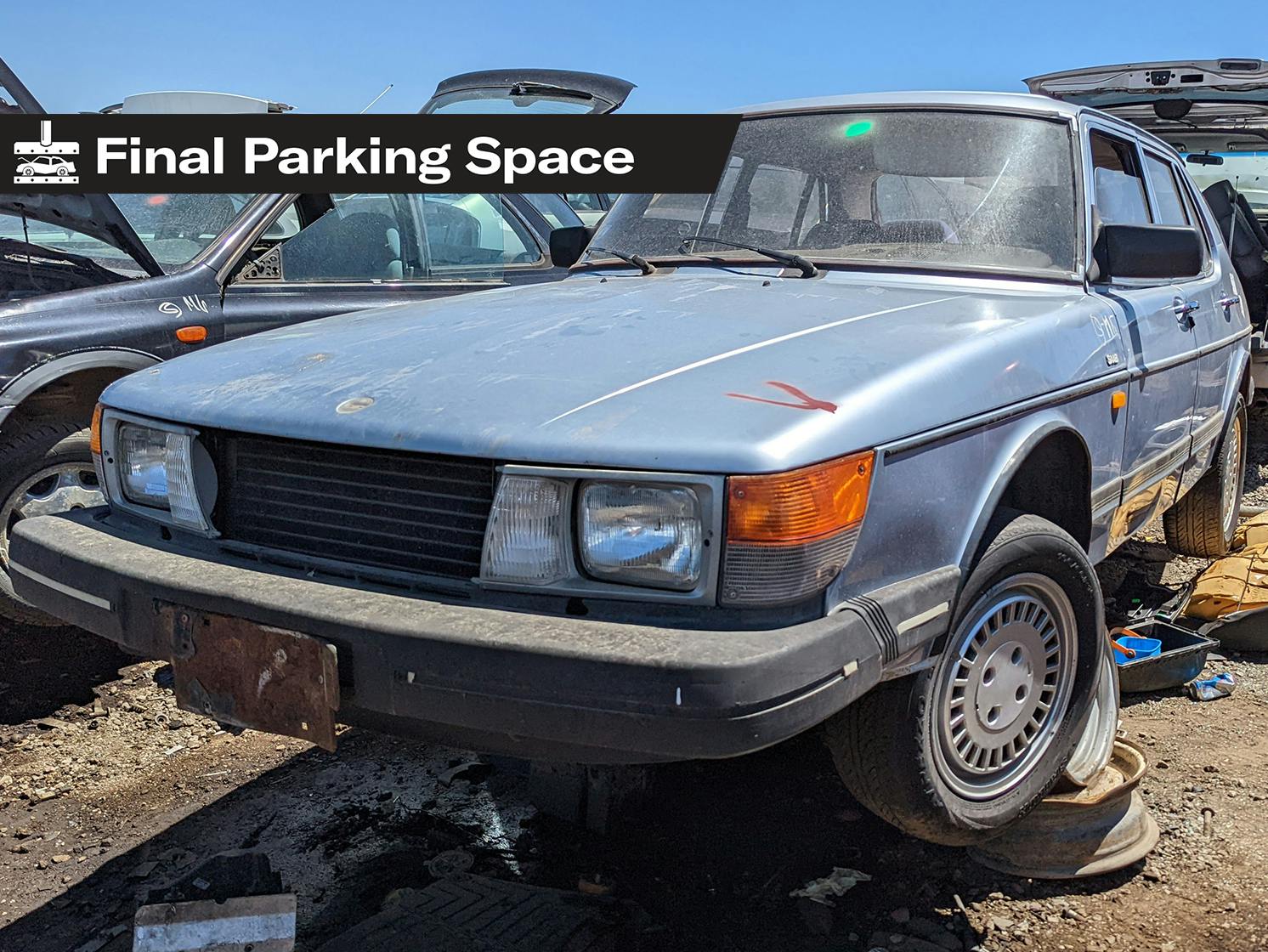
Classic Saab’s seem to be a car with no middle ground – you really like them or you really don’t.
I definitely really like them.
I had 3 Saab cars and loved every one of them. If they made these quirky cars today, I would be on board…
They were known for being notoriously ugly back in the day, and it is not an ugliness that time and nostalgia has softened yet. Like FNJ, I am not surprised they have their enthusiasts, however I don’t think I would sign up for the pain of trying to resurrect that one
“Crazy People” – one man’s genuine love for Saabs.
Looks salvageable.
A friend had one–we did the Ohio to Hershey trip several times in it–comfortable and quick–once you learned where the ignition key went. And plenty of room to stash Hershey treasures–even large ones.
It was harshly treated by a tornado while John was at choir practice–the tornado blew the roof off the church, slid his car partway across the parking lot, blew out all the glass and wrinkled sheet metal from flying debris. John found a parts car with a perfect body and a blown engine, grabbed the glass and sheet metal he needed and since the parts car was the same color, within a few weeks, his SAAB was back to normal. He drove it ’till he passed in 2019.
I “inherited” a ’91 900S with a new job. The guy I replaced had persuaded the company that this should be his company car, then was transferred. I was in Houston where the Saab A/C would cool the car. However, it had to be on Max Air and Max Fan. Those two luxuries made sufficient noise that I could not hear a cell call without turning both to low. By the time I finished a call, I was sweating profusely. I also determined that the “S” stood for Slow. Not an enthusiast but, I did notice at the time that New England had a proliferance of these cars. Great in a cooler area, perhaps.
We bought a ‘91 Saab 900 – the first of an eventual three (‘97 900 Cabrio and ‘03 9-3), all manuals. The first two were absolutely reliable and enjoyable to drive. Even the ‘03 was a good highway car, but the GM DNA was fully integrated by then, and we had numerous electrical gremlins throughout our ownership. As soon as the warranty expired, we traded it in.